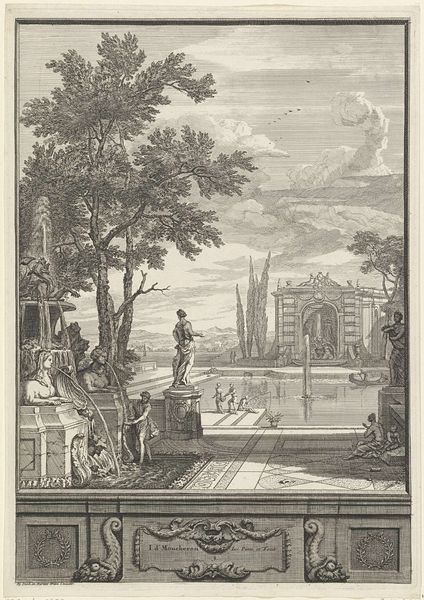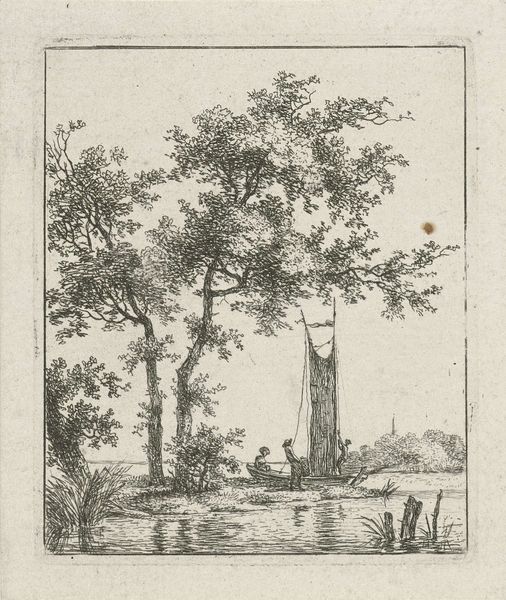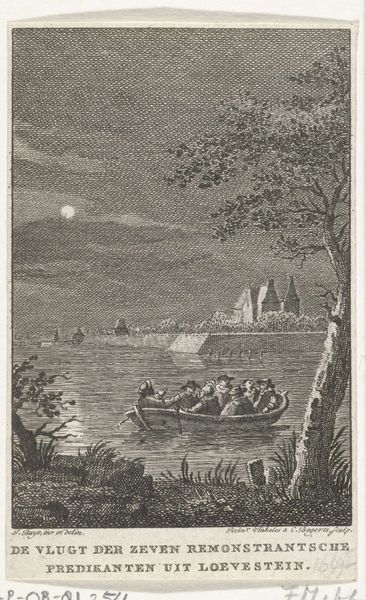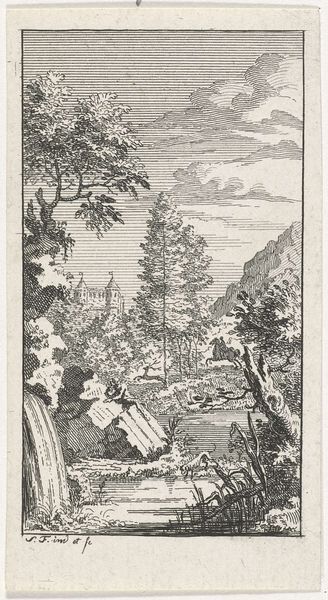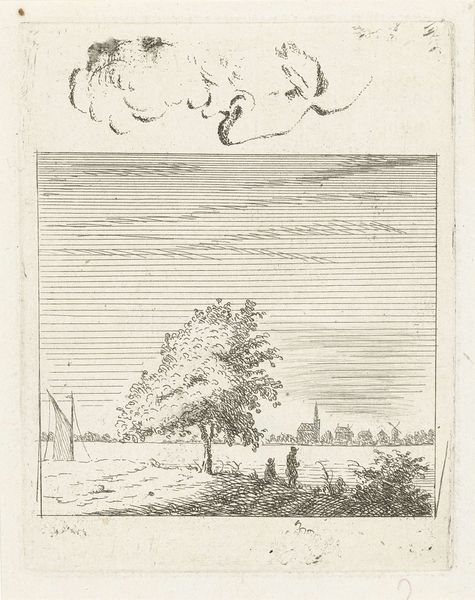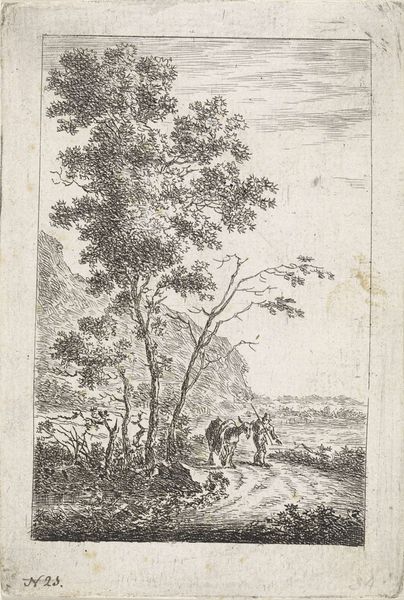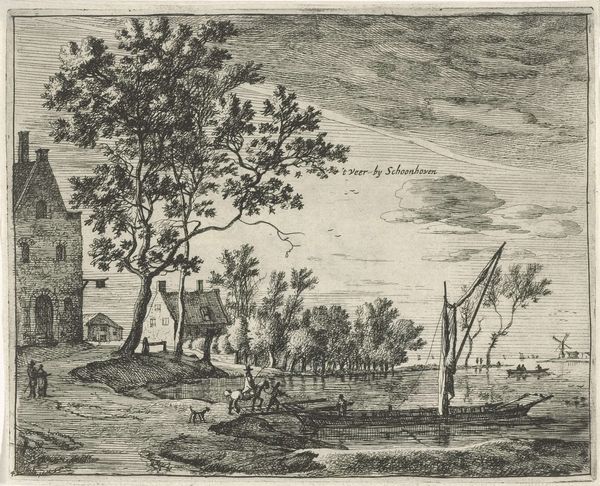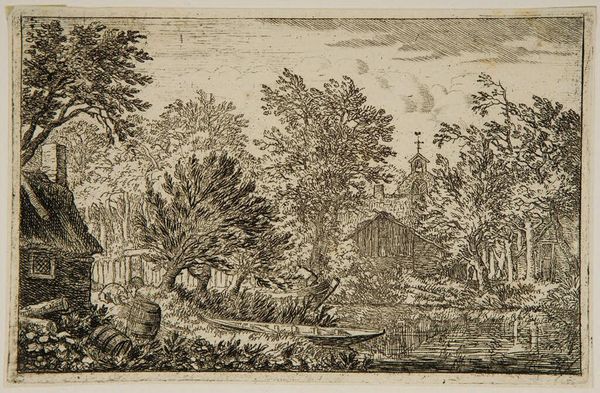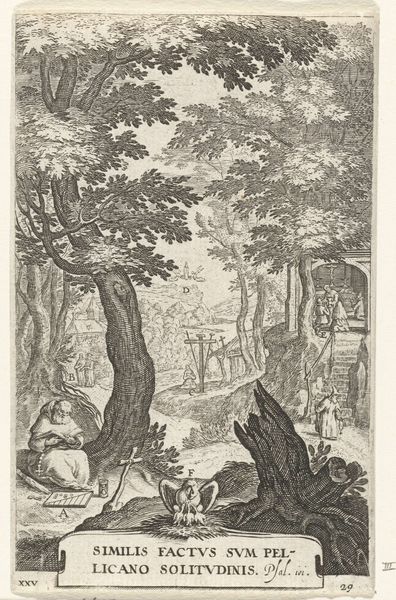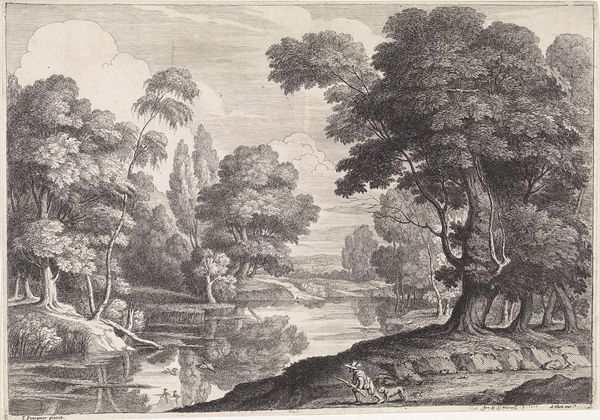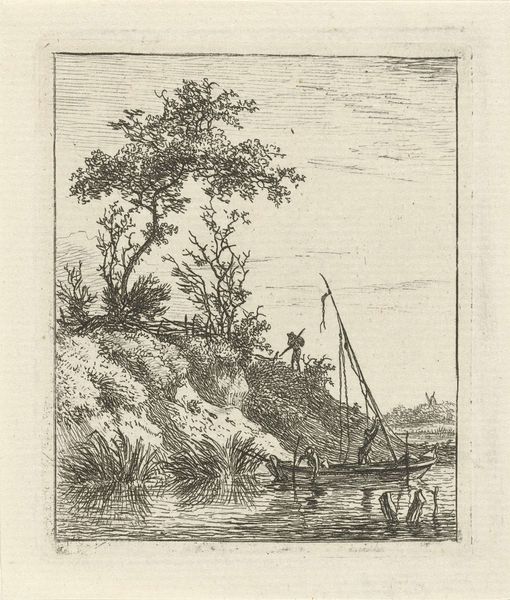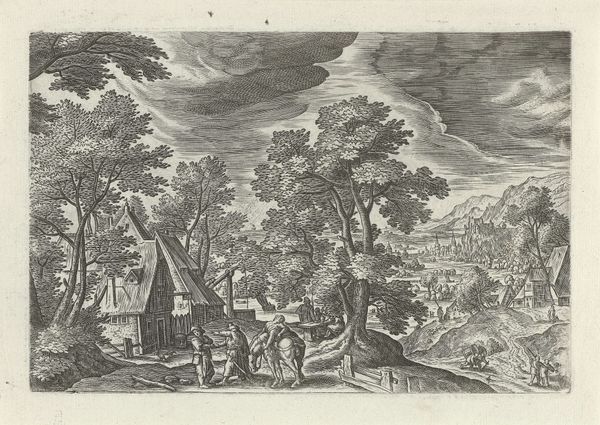
print, etching, engraving
#
dutch-golden-age
# print
#
etching
#
landscape
#
figuration
#
genre-painting
#
engraving
Dimensions: height mm, width mm
Copyright: Rijks Museum: Open Domain
Editor: This is "Juli", an etching and engraving by Simon Fokke, dating from 1722 to 1784. The landscape is quite serene, yet the cross-hatching in the sky feels almost turbulent. What visual symbols do you notice that resonate with the period? Curator: Notice how the composition is almost divided. One side holds the trappings of nobility—the grand building, sculpture, figures, while the other shows a common scene: fishing. Even the clouds above are layered, suggesting different emotional registers. Consider how the windmill symbolizes industry and providence, balanced against the almost staged leisure of the wealthy. Where do your eyes focus first and what story do those elements tell you? Editor: I immediately looked at the people in the boat. The act of fishing feels more immediate, more connected to the land. Is this contrast deliberate, a subtle commentary? Curator: Possibly. Think about Dutch Golden Age paintings – the genre often contrasted wealth with the reality of everyday life, reflecting societal tensions. This print captures a moment in time. It may be romanticizing nature but the overall cultural memory that emerges when we examine the symbolism—nature, wealth, work—shows us values in tension. Does this tension invite contemplation, perhaps even critique? Editor: I see what you mean! I hadn’t really noticed the social commentary, but it's clear now. Looking at how different segments of society were depicted, it offers insight to the period’s anxieties. Curator: Precisely. Visual culture leaves symbolic fingerprints, echoes of their values and anxieties. Understanding them gives insight. Editor: I learned a lot about observing not just what is there but also how to read it. Curator: I agree. Reflecting on images connects us with echoes of the past!
Comments
No comments
Be the first to comment and join the conversation on the ultimate creative platform.
